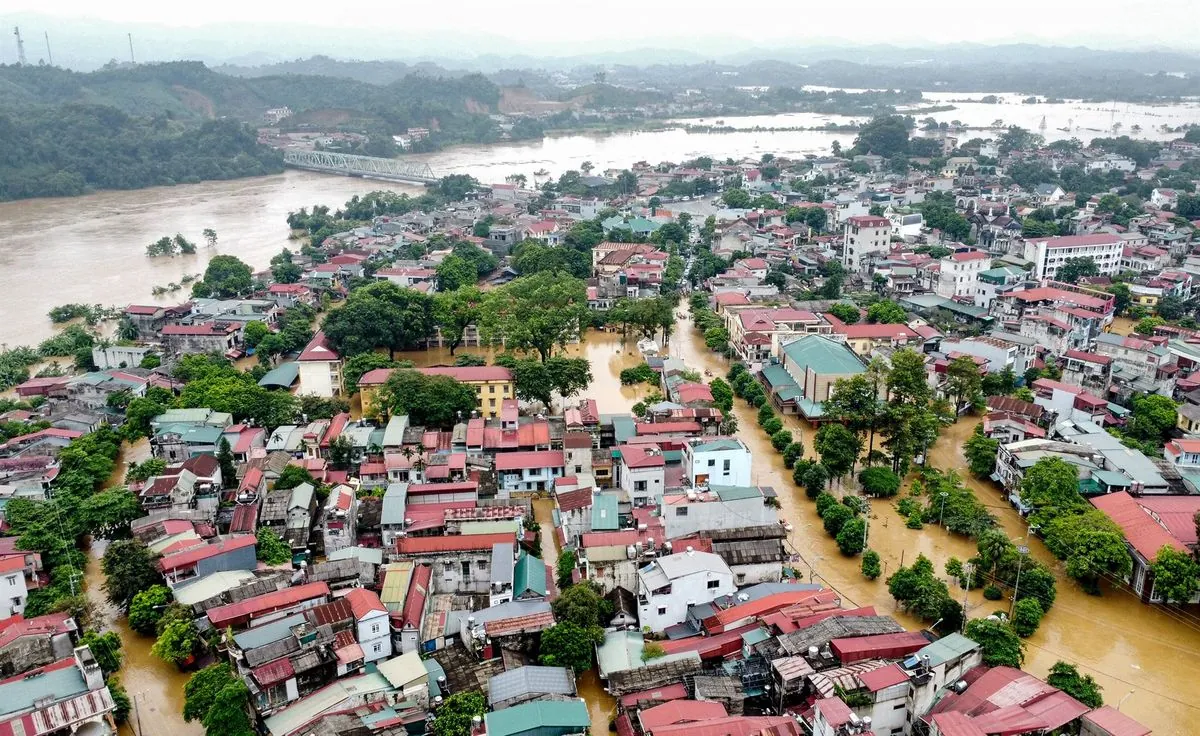In a devastating turn of events, Vietnam has been grappling with the aftermath of Typhoon Yagi, the most powerful storm to hit Asia in 2023. The impact has been far more severe than initially anticipated, with damages now estimated at 81.5 trillion dong ($3.31 billion), according to recent state media reports.
This figure, provided by Agriculture Minister Le Minh Hoan, is double the preliminary assessment of $1.6 billion made earlier this month. The typhoon's destructive force has left a trail of devastation across northern Vietnam, affecting various sectors of the economy and claiming 299 lives, with 34 individuals still unaccounted for.
The storm's fury was particularly felt in Vietnam's export-oriented industrial hubs, where factories and facilities bore the brunt of the impact. This is particularly concerning given that Vietnam's industrial sector contributes about 33% to its GDP, and the country is a major exporter of electronics, textiles, and footwear. The agricultural sector, which employs about 40% of the country's workforce, also suffered significant losses with extensive flooding of farmland.
"The total economic damage is initially estimated at over 81.5 trillion dong, with most damage triggered by landslides and flash floods."
The scale of destruction has raised concerns about Vietnam's economic outlook. Prior to the disaster, the nation had been experiencing robust growth, with an average GDP growth rate of 6.5% in the past decade. However, the planning ministry now warns that the typhoon's impact could potentially reduce the forecasted economic growth of 6.8% to 7% by 0.15 percentage points this year.
In response to the crisis, Minister Hoan has urged authorities to prioritize helping people resume production while ensuring stable supplies and prices. This is particularly crucial as Vietnam is the world's third-largest exporter of rice and second-largest coffee exporter after Brazil.
The aftermath of Typhoon Yagi has also led to a steady rise in live pig prices, affecting a key component of the Vietnamese diet. Pork accounts for about 70% of meat consumption in the country, making this price increase a significant concern for both consumers and the economy.
The financial sector is not immune to the typhoon's repercussions. Rating agency S&P Global has warned that Vietnamese banks' profitability could be impacted due to debt relief measures ordered by the central bank, the State Bank of Vietnam, in response to the disaster.
As Vietnam works to recover from this calamity, the event underscores the country's vulnerability to natural disasters due to its long coastline of approximately 3,444 km and its tropical monsoon climate. It also highlights the importance of the ongoing efforts to develop renewable energy sources, with the country aiming for 15-20% of total energy supply from renewables by 2030.
The road to recovery will be challenging, but Vietnam's resilience, demonstrated through its high literacy rate of about 95% and successful economic reforms since 1986, provides hope for overcoming this setback. As the nation rebuilds, the focus will likely be on strengthening infrastructure and implementing measures to mitigate the impact of future natural disasters.
